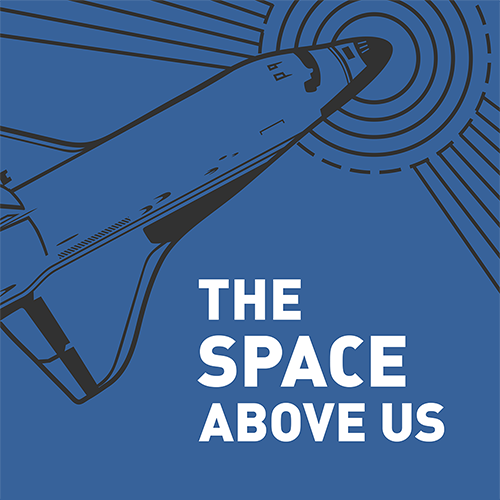Episode 137: STS-65 - The Flight of IML-Man (IML-2)
Table of Contents
Space Shuttle Columbia is flying for the 17th time, carrying the International Microgravity Laboratory 2 payload. With fish, newts, and bubbles, it sounds more like a witch’s brew than an advanced research laboratory. But don’t let vague descriptions fool you! Also, who can leap long Spacelabs in a single bound? None other than IML Man, of course!
Episode Audio #
Photos #

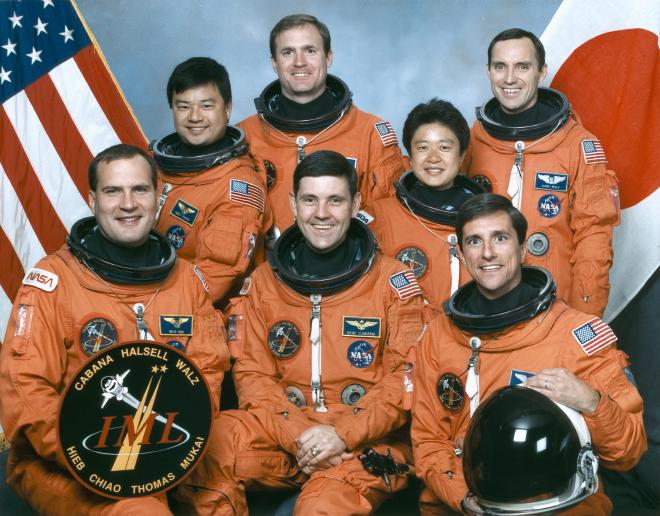
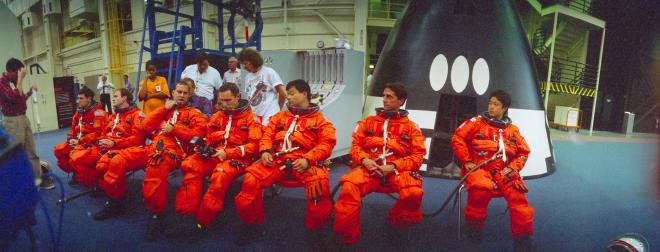
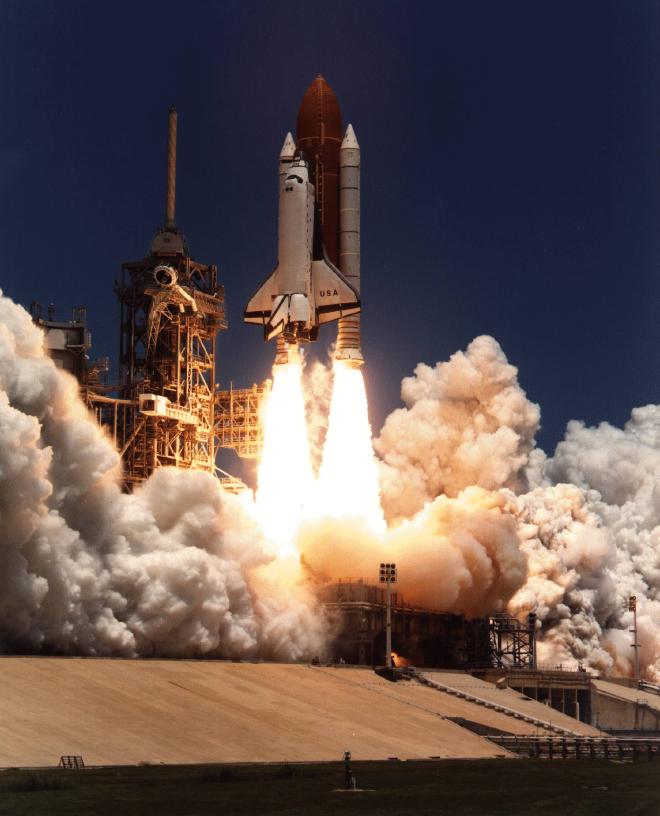
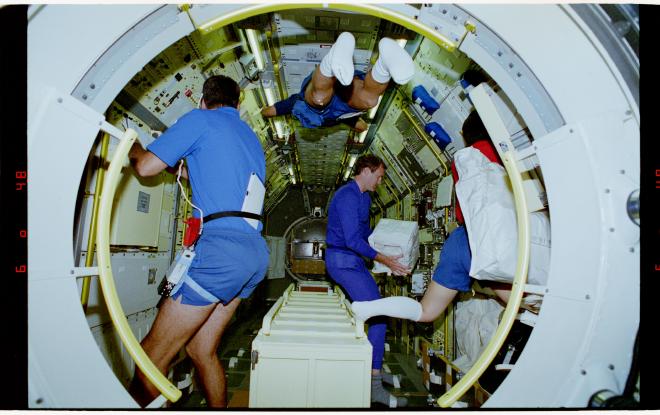
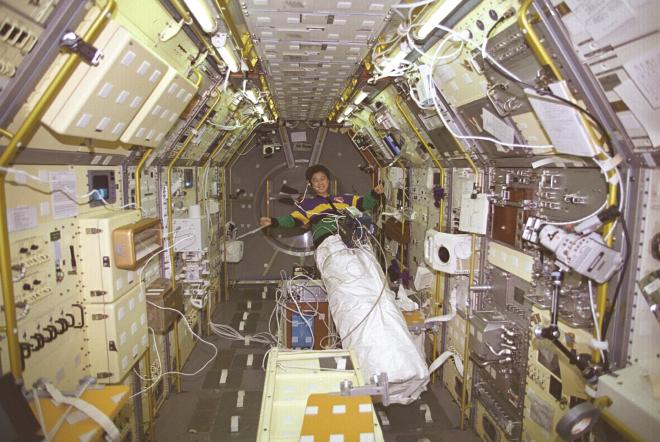
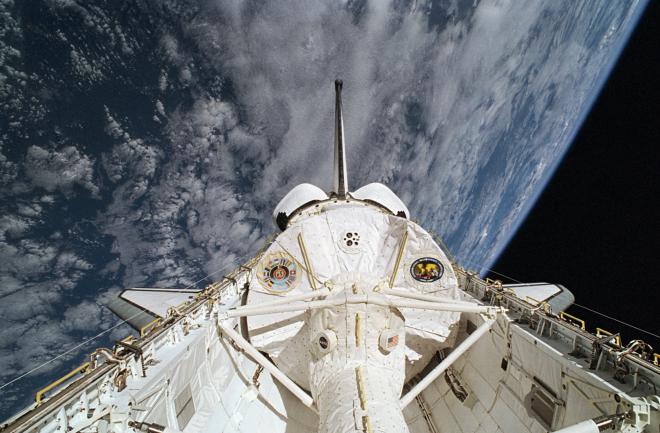
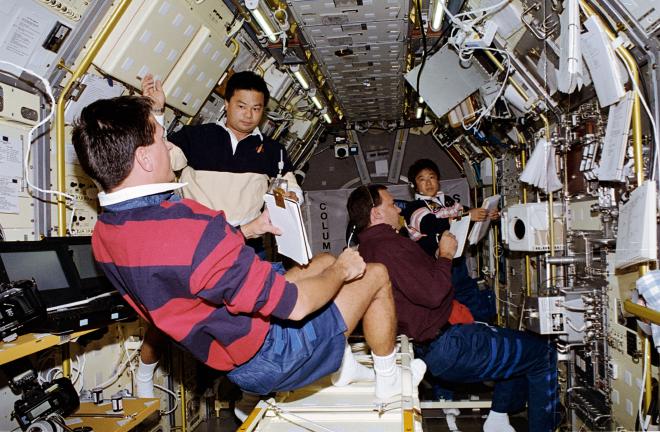
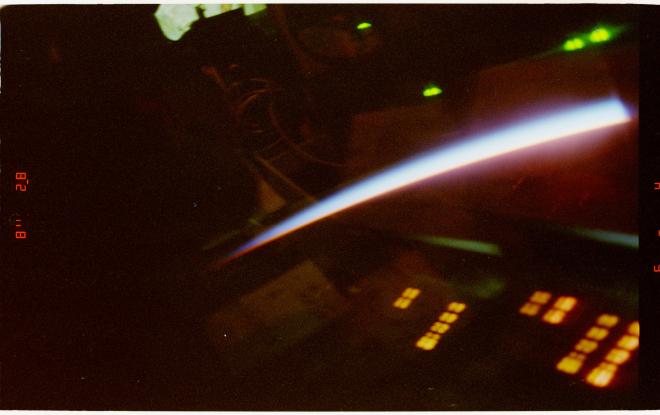
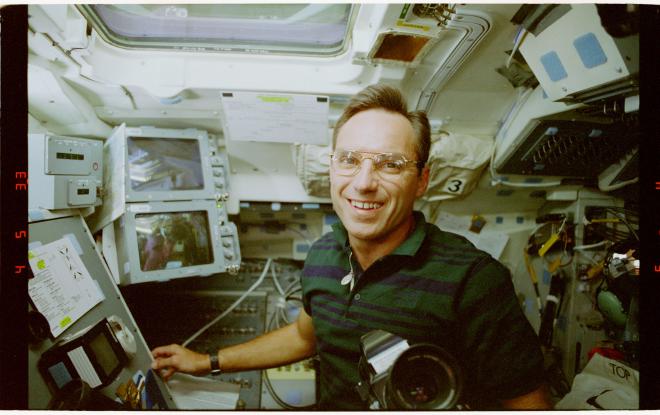
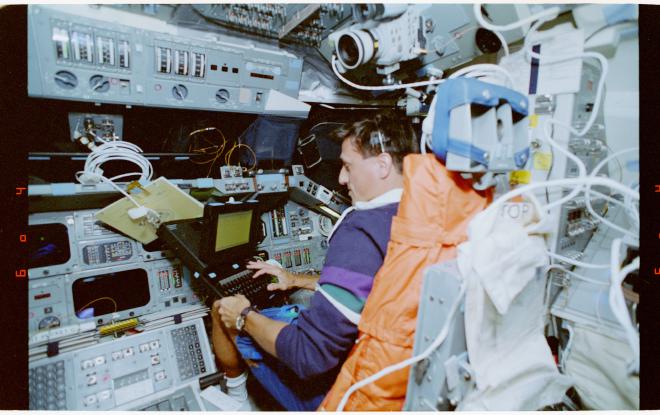
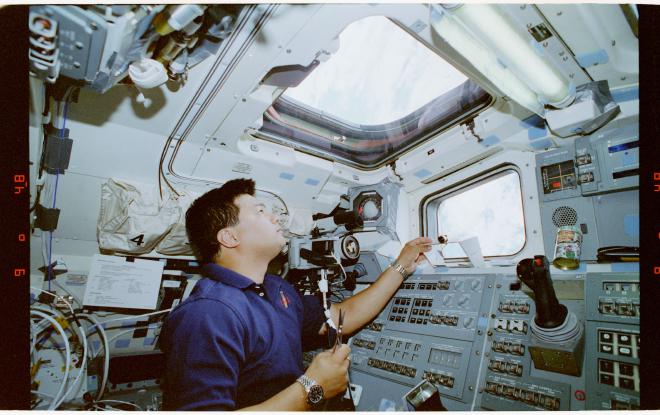
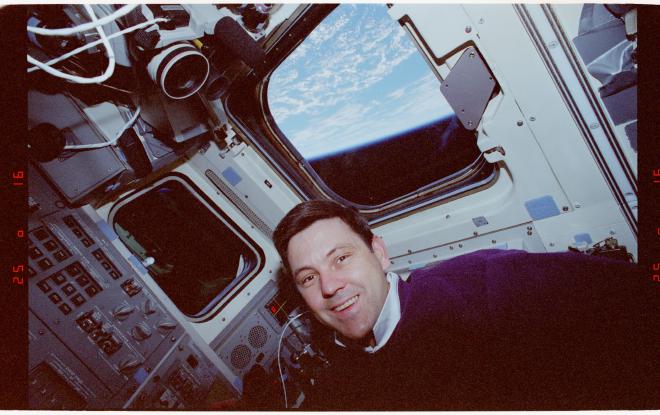
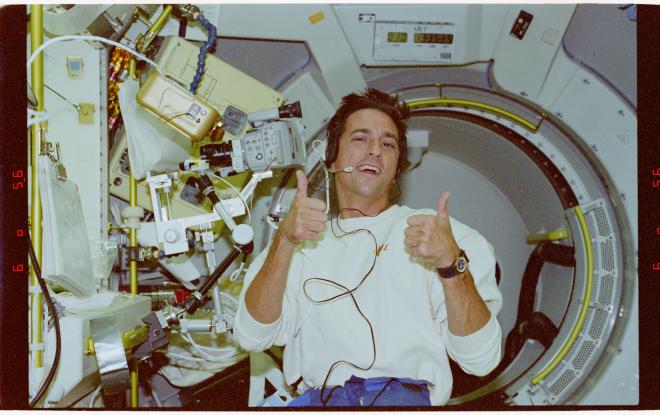
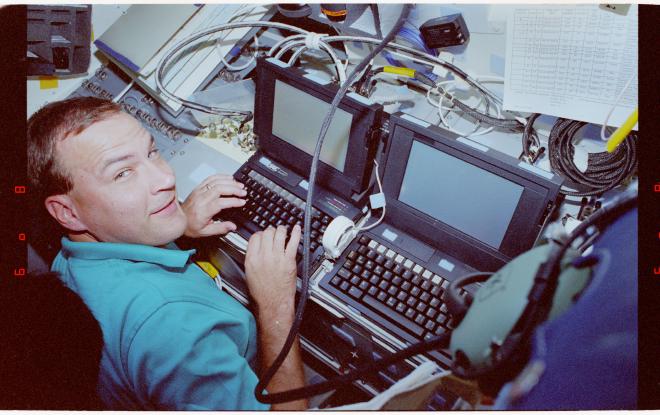
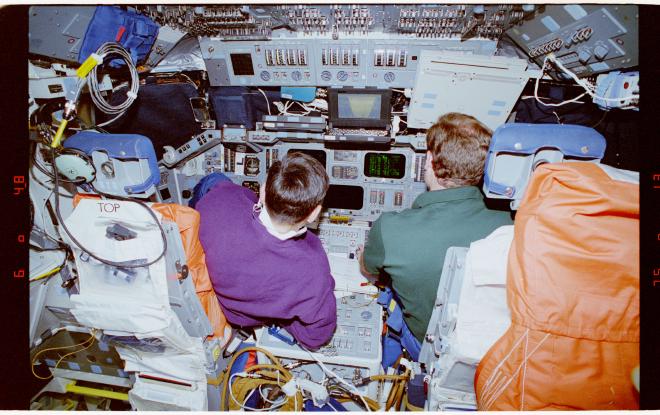
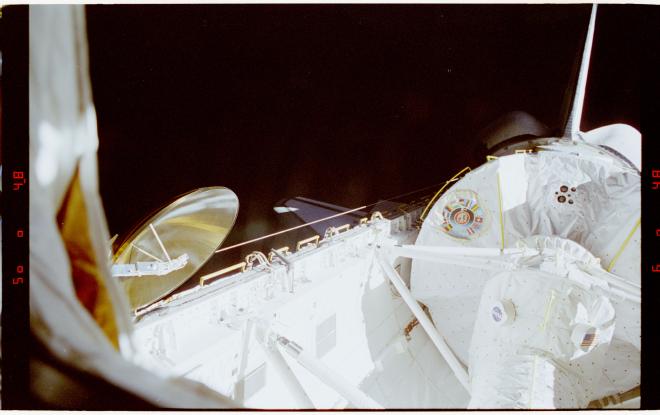
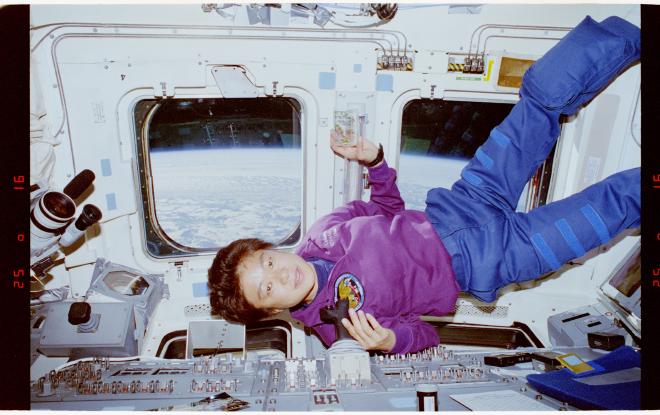
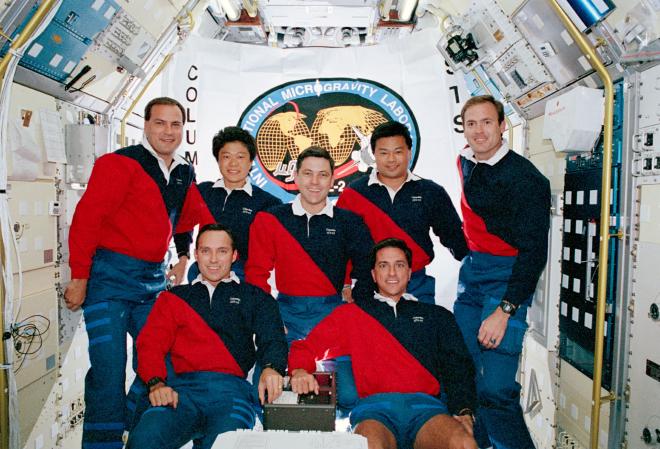
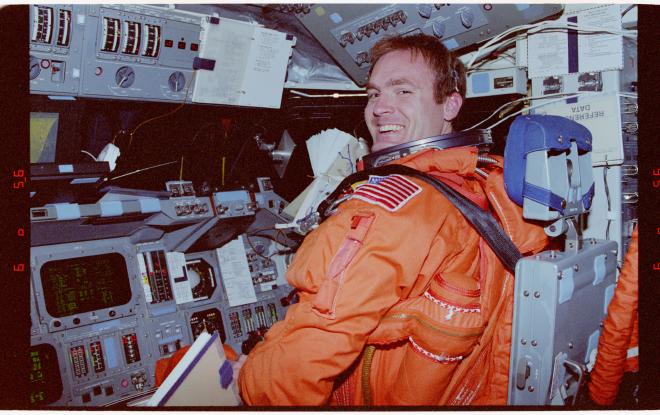
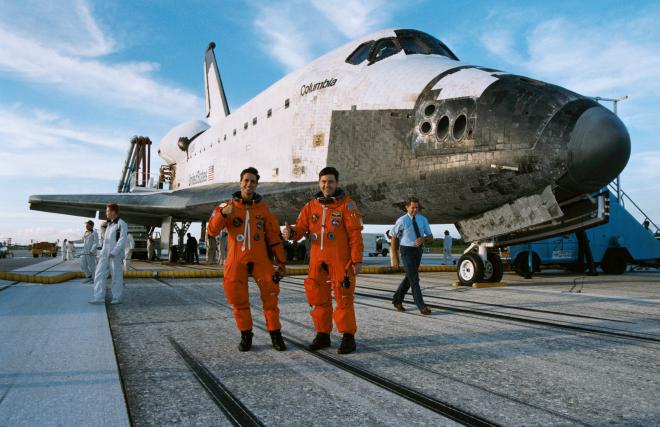
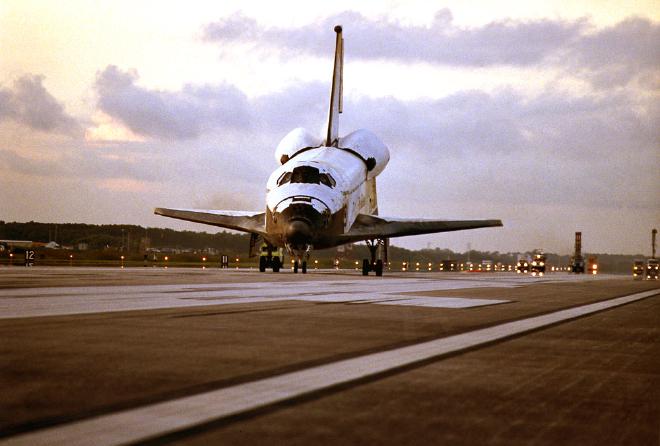
Post-Flight Presentation #
If you’d like to see the mission in motion you can check out the post-flight presentation here:
Ascent Flight Deck Video #
Ever wanted to ride along on a Shuttle ascent? Here’s what it looks like!
Entry Flight Deck Video #
Entry takes a little longer than ascent, but we can still ride along!
Mission Highlights Resource Tape #
Ever wanted to watch almost an hour of B-roll from STS-65? Well now’s your chance!
Transcript #
NOTE: This transcript was made by me just copying and pasting the script that I read to make the podcast. I often tweak the phrasing on the fly and then forget to update the script, so this is not guaranteed to align perfectly with the episode audio, but it should be pretty close. Also, since these are really only intended to be read by myself, I might use some funky punctuation to help remind myself how I want a sentence to flow, so don’t look to these as a grammar reference. If you notice any egregious transcription errors or notes to myself that I neglected to remove, feel free to let me know and I’ll fix it.
Hello, and welcome to The Space Above Us. Episode 137, Space Shuttle Flight 63, STS-65
The Flight of IML-Man
Last time, we talked about the low-flying mission of Endeavour on STS-59. OV-105’s payload bay was bristling with advanced radar antennas, and over the course of 11 days, the mission scanned the Earth’s surface, and even a little bit under the surface, in unprecedented detail. While, as always, there were a number of smaller experiments that studied the behavior of various materials and processes in space, the flight very much focused outwards, sweeping its radar beams across the planet. For today’s mission, we’ll be turning our focus inwards.
That’s because today, we’ll be flying on Space Shuttle Columbia, carrying the Spacelab pressurized laboratory module into orbit for the 10th time. Inside that pressurized module were 80 experiments designed by over 200 scientists, representing NASA, ESA, and the space agencies of France, Germany, Canada, and Japan. Collectively, they make up the International Microgravity Laboratory 2 mission. Continuing and expanding on the research from IML-1, two and a half years earlier on STS-42, this mission would be studying a wide range of topics including, but not limited to, the reaction of specialized metal alloys, the shapes of the astronaut’s backs, the behavior of otolith-free goldfish, the gravity tolerance of jellyfish and slime molds, and the cognitive abilities of astronauts on long-duration space missions. It’s a pretty packed mission.
In fact, the flight is so packed that in the interest of time, I’m going to defer a planned check-in with the Galileo probe, still making its way to Jupiter. I think in a couple of episodes I’m going to have a little more time to talk about Galileo, and the high-impact observations of Jupiter it was making partway through the STS-65 mission. So you can just look forward to that one.
For this flight, we’ve got four rookies to meet, so we better get right into it. I’ll also note that we are lucky to have two crew members who participated in the oral history program: Bob Cabana and Leroy Chiao, so we’ll be getting some extra details from their perspectives.
And speaking of Bob Cabana, he’ll be commanding this mission, flying into orbit for the third time. When we last flew with Cabana, he was in the right-seat of STS-53. And actually, speaking of STS-53, I have a quick minor correction. Last episode, I mentioned how Rich Clifford flew on STS-53 and I said it was an unclassified Department of Defense mission. Turns out that’s not quite accurate, since the flight was only partially declassified, with a classified primary payload, which we speculated was a communications satellite. I think I mixed it up with STS-39, which was an unclassified DoD flight. Anyway, Cabana is in the left seat now, commanding for the first time on this, his third of four missions.
Joining Cabana up front was today’s Pilot, Jim Halsell. James Halsell was born on September 29th, 1956 in West Monroe, Louisiana. Halsell graduated from the US Air Force Academy before heading off to learn how to fly. The Air Force put him in an F-4 and taught him how to deliver both conventional weapons, and the ones that glow in the dark and have a few additional warning labels on the box. He also graduated from the Air Force Test Pilot School, continuing to fly the F-4 as well as the F-16 and the always impressive SR-71 Blackbird. Along the way, he also earned a master’s degree in management and another in space operations. He was selected as an astronaut in 1990 and this is his first of five flights.
After my shock on the last flight, discovering MS4 flying on the flight deck during reentry, you can imagine my reaction when I learned that on this flight, Mission Specialist 1, Rick Hieb, was not behind the Pilot, where MS1 usually sits during launch, but rather down on the middeck! At least, that’s according to the oral history interview with Leroy Chiao, who was MS3. But let’s not get distracted. We most recently saw Rick Hieb flying on STS-49, where he was one third of the EVA that captured Intelsat on Endeavour’s first flight. Today he’s flying as the Payload Commander on this, his third of three missions.
Thankfully, Mission Specialist 2, who serves as the flight engineer, always sits right in the middle of the flight deck, for both the launch and entry, so we know exactly where to find today’s MS2: Carl Walz. We last saw Walz on his first flight, STS-51, where he performed an EVA to help assess techniques for the then-upcoming Hubble servicing mission. This is his second of four flights.
Mission Specialist 3, who for this flight is sitting behind the Pilot on the middeck, was Leroy Chiao. Leroy Chiao was born on August 28th, 1960 and grew up in Danville, California. He earned a Bachelor’s in Chemical Engineering from the University of California, Berkeley, before continuing on to pick up a Master’s and PhD in the same topic from the University of California, Santa Barbara. Though I was a little less impressed by that masters when in an oral history interview he mentioned that since the requirements for the masters were a subset of the requirements for his PhD, all he had to do to add the master’s degree to his wall was pay a 50 dollar filing fee. Chiao was putting his chemical engineering education to use developing advanced aerospace materials for applications such as space telescopes and composites when NASA selected him as an astronaut in 1990. This is his first of four flights.
Taking one last trip down the ladder to the middeck, we find Mission Specialist 4, Don Thomas. Donald Thomas was born on May 6th, 1955 in Cleveland, Ohio. He earned a Bachelor’s in Physics from Case Western Reserve University, continuing on to a Master’s and Doctorate in Material Science from Cornell. From there he joined AT&T’s Bell Laboratories, working on advanced materials having to do with semiconductors. While there, he also taught Physics at Trenton State College. After five years of that, he made his way down to Houston, helping Lockheed review the materials used in Space Shuttle payloads, before joining NASA Johnson as a Materials Engineer. He was actually the principal investigator for an experiment that flew on STS-32 in January of 1990. January of 1990 was a pretty awesome month for Don Thomas because in addition to his experiment flying, he was also selected as an astronaut. This is his first of four flights.
And rounding out our crew is our lone Payload Specialist: Payload Specialist 1, Chiaki Mukai. Chiaki Mukai was born on May 6th, 1952 in Tatebayashi, in the Gunma Prefecture of Japan. She attended the Keio University of Medicine in Tokyo, earning doctorates in both Medicine and Physiology, and was a certified cardiovascular surgeon. In 1985 she was selected as one of three potential candidates for the Spacelab-J mission, which flew on STS-47. So while this is only her first flight, Mukai has been in the background of our story for a while. This is her first of two flights.
As we’ve come to expect on a Spacelab flight, the crew was split up into a red shift and a blue shift, enabling around the clock operations. Reporting to the Red Shift was Commander Cabana, Pilot Halsell, Mission Specialist and Payload Commander Hieb, and Payload Specialist Mukai. And making up the Blue Shift were Mission Specialists Chiao, Thomas, and Walz, with Walz leading the shift. Typically, we’ve seen Commanders hold off from explicitly joining one shift or the other, preferring to drift around based on their needs, but Cabana said that he trusted Carl Walz to get the job done and was happy to leave the Blue shift to him.
Interestingly, in Chiao’s oral history he noted that there was an unusual lack of cohesion between the two shifts, seemingly almost leading to two separate crews. Chiao stated that Hieb tried to stoke some friendly competition but had maybe taken things a little far. But, I dunno. Two shifts competing against each other? Sounds like some typical Blue Shift bellyaching, am I right?
27 years to the day before this episode was released, on July 8th, 1994, the crew strode across the gantry and climbed aboard Space Shuttle Columbia. Nobody on the crew expected the flight to go anywhere that morning due to heavy thunderstorms the night before along with continued lousy weather both in Florida and at their trans-Atlantic abort sites. But despite the crew expectations, the count proceeded smoothly, encountering no delays or unplanned holds, and when Pilot Halsell was given the go-ahead to fire up the APUs, everyone realized perhaps they would go to space today after all. At 12:43 PM, Space Shuttle Columbia roared off the launchpad for the 17th time. If you were to watch the live coverage and listen to the air to ground radio, you would have heard a perfect ascent, with no drama, as Columbia was flown into an approximately 300 kilometer high orbit. And that’s what happened, but thanks to oral histories and a new piece of equipment on the flight deck, we can expand on that a little bit.
Leroy Chiao later talked about what the moment of liftoff is like. We’ve heard a lot of different perspectives on this from several generations of astronauts, and I find it so fascinating how there are some pretty different answers. For Chiao, the overwhelming feeling was one of relief. Yes, at that moment he was embarking on what was likely the most dangerous activity of his life so far, but it was also one that he had dreamed about and worked towards for decades. He no longer had to worry about something going wrong and pulling him from the flight. No car crash on the way to the grocery store or unexpected medical snag could pop up and end his dream early: he was going to space.
Chiao also experienced a common sensation for first-time shuttle fliers. After the violent power of the solid rocket boosters dwindled and they were blasted away from the orbiter, with a torrent of flame splashing across the windshield, the flight felt so incredibly quiet and calm that he was sure the main engines had failed. One quick glance at the engine indicators told him that all three engines were going strong, but it was still a disconcerting feeling. Later, Pilot Halsell admitted that he made the same frantic engine check after SRB sep. Around six minutes later, when the main engines did shut down, after a nominal ascent, the sudden lack of acceleration gave Chiao the sensation of tumbling forwards. His report may as well have come from Gus Grissom’s mouth, 33 years earlier, since Grissom experienced the exact same sensation on Liberty Bell 7.
But in between SRB sep and main engine cutoff, we get one more fun little moment. Around 7 minutes after liftoff, as the engines throttled down in order to maintain a nice tolerable 3-g acceleration, Chiao noticed something. One of the many sizable checklist books on the flight deck was starting to slowly peel loose from its velcro mounting. He thought to himself, well, the velcro should hold. And in any case, it’s tethered. So rather than trust his rookie arms under 3-g conditions, he left the book alone. After about 15 seconds of sloooowly peeling back the velcro, the book finally fell with a loud clunk. Not wanting his fellow crew members to be alarmed, Chiao called out “Just a checklist”, Cabana said “OK”, Chiao said “It’s tethered” Cabana “that’s good” and then there’s a beat.. and Chiao said “Well, it was tethered.” Thankfully, the book did no damage on its way to the back of the flight deck.
But what’s amazing is we can actually experience this moment for ourselves. That’s because STS-65 was the first shuttle flight to record the ascent on a handheld video camera, mounted somewhere near the back of the flight deck. The flight carried two Sony Hi8 camcorders, and thanks to them, we gain unprecedented access into moments like ascent, entry, and life aboard the spacecraft. More on that later.
After arriving on orbit, there was the usual scramble of activity. Some people rushed to use cameras with telephoto lenses to get pictures of the External Tank, looking for damage. Others began taking off the bulky launch and escape suits, and packing up the Mission Specialist seats. And only four and a half hours after liftoff, Spacelab was activated and ready for science.
Right about that same time, in accordance with the red shift / blue shift schedule, Chiao, Thomas, and Walz climbed into their bunks on the middeck and tried their best to fall asleep. That’s gotta be a whiplash kind of day. Congrats on achieving a life long dream by riding a controlled explosion into space! Now go to sleep! Chiao popped a sleeping pill and lay there, trying hard to fall asleep. He found that he just couldn’t quite get comfortable, staring up at ceiling of his bunk just a few inches away. On Earth, he typically slept on his side, so despite this making zero logical sense, he tried turning in his bunk and facing the wall. Somehow, despite weightlessness arguably making this maneuver pointless, it worked! And he soon fell asleep.
As you might expect on a Spacelab mission, and especially once that’s the sequel to IML-1, the spacecraft was just overbrimming with experiments, many of which had not been flown before. We’ve got RRMD, PAWS, VIBES, TEMPUS, BDPU, Quasi Steady Acceleration Measurement, and one of the worst acronyms or initialisms I’ve ever seen: LCEOR/F. Also, I would also be remiss if I didn’t mention that there are two completely different experiments named Biorack and Biostack. As if it wasn’t hard enough keeping Spacelab and SPACEHAB straight. As usual, I’m going to skip over most of these entirely, and only skim the surface on a few, but I want to do my standard reminder that this isn’t intended to diminish their importance. In fact, these type of low-drama, low-flash experiments, which were practically a dress rehearsal for the International Space Station, are probably some of the most important of the program. But to do justice to all of them would probably take me like three hours, and as fascinating as new crystals always are, I like to dedicate more time to life aboard the orbiter.
First, let’s take a look at the Performance Assessment Workstation, or PAWS. This is the latest in a long line of experiments that work to better understand the impact of spaceflight on the crew. This is data that would be useful immediately when planning upcoming missions, but also important in the long term when crafting an overall strategic approach to flying humans in space. The question they were trying to answer this time was: does flying in space affect a person’s cognitive abilities? Stuff like their problem-solving, reaction times, motor skills, and ability to multitask. To that end, several crew members completed a series of evaluations using a laptop computer. They looked at letter sequences, evaluated math calculations, examined spatial patterns, tracked an unstable moving object using a trackball, and were even subjected to multiple tests at once to determine how well they could multi-task.
In order to account for a potentially major confounding variable, the crew also self-reported their fatigue level throughout the flight as they worked on the PAWS experiment. After all, they were working pretty hard and pulling some long hours, and would naturally become fatigued. It was important to separate the effects of fatigue from the effects of weightlessness. To help out with this, Air Force personnel on the ground were subjected to a similar battery of tests while remaining firmly planted on the ground.
As you might expect, the crew did experience some performance degradation over the long flight, with one report calling out decrements in memory-search performance, but that was determined to be related to fatigue, not weightlessness. Science moves pretty slow, so it wasn’t until 1997, three years later, that a report summarizing the results of the flight was released. In it, I found three bullet points summarizing the result of PAWS: “Reliably measured cognitive and psychomotor performance in microgravity. Performance decrements were related to fatigue. Databases on human performance in space need expansion.” So there you have it. Hopefully we see more of this kind of thing in the future.
Another new facility, the Bubble, Drop, and Particle Unit, or BDPU, was dedicating to studying (you’ll never guess) bubbles, drops, and particles. Some specific investigations included: “Bubble Migration, Coalescence and Interaction with Melting and Solidification Fronts”, “Bubble Behavior Under Low Gravity”, and “Thermocapillary Instability in a Three-Layer System”. As you can imagine, thoroughly understanding the behavior of bubbles in weightlessness is a pretty important topic. Whether it’s hydrazine going into a thruster, ammonia going into a radiator, or water going into an astronaut, the presence of bubbles would make a huge difference in how various systems operated. And this experiment took it one step further, testing bubble behavior in the presence of thermal gradients. So let’s say one side of a tank of fluid is really cold and one is really hot, which we’d perhaps see in a cooling system. How will bubbles move? Will they join together into one big bubble? Will they pop if the thermal gradient is stronger? There were lots of important questions to answer here.
The next experiment would also be studying small spherical objects, but instead of bubbles, it was one-centimeter-wide balls of various metal alloys. The acronym version of the experiment’s name was TEMPUS, but that was short for a series of long German words that I have no hope of pronouncing correctly. Thankfully, I can pronounce the English version just fine: the Electromagnetic Containerless Processing Facility. The goal here was to take advantage of weightlessness both when studying the material itself, but also when handling the material. By using copper coils to carefully craft magnetic fields, the spherical samples could be moved around without actually touching the walls of the container, hence ‘containerless’ in the name. This trick could actually be done on the Earth, but the magnetic field would need to be so strong that too much heat would be generated. When they didn’t have to fight a 1-g force, things were a lot easier.
Keeping things containerless was important for two reasons. First, it allowed the sample to remain ultra pure. If it never touched the walls of the container then it couldn’t be contaminated by it. But second, it also allowed the materials to be supercooled. Have you ever left a bottle of water in the freezer, discovered it was still a fluid, but the second you touched it, the whole bottle turned to ice? Maybe not, but you can find videos of it online. What happens here is that the water had been cooled below its freezing point, but thanks to the smooth interior of the bottle, the ice didn’t have a place to start growing, what’s called a nucleation site. But when you grab the bottle, you jostle it enough to overcome this delicate balance, and the whole thing freezes right before your eyes. Well, we’re going to do the same thing with these metal spheres. Heat them up, then carefully cool them down while keeping them in the center of the container. If they touched the side of the container, that would serve as a nucleation site, and the ball would solidify. By magnetically levitating the sample, the crew could control this process. For some samples they would intentionally trigger the solidification by probing the sample with a needle.
Over the course of the mission, 22 different samples were processed, shedding new light on how metals solidify, and how the specifics of their cooling process affected their properties.
One last new experiment to touch on today was one provided by the Japanese space agency: the Aquatic Animal Enclosure Unit, or AAEU. When I saw an experiment named AAEU I knew I had to throw in a “John Madden!” which is either going to have you cracking up in laughter or scratching your head in puzzlement. But now I’m distracting myself again. The Aquatic Animal Enclosure Unit would be, you guessed it, studying the behavior of aquatic animals. Shortly after arriving on orbit, some newts were given an injection that prompted them to lay eggs. Since newts grow up in about the same amount of time it takes to fly a space shuttle mission, the crew and scientists on the ground were able to study their development and see how their gravity sensing organs were affected by weightlessness.
Gravity sensing organs, or otoliths, were clearly a main focus of this experiment, because the experiment also studied the influence of otoliths on six goldfish flown on the mission. One goldfish had the otoliths on both sides of its head removed, four had only one removed, and one got to keep both its otoliths intact. The fish were then free to swim around in the enclosure while it was lit up from different directions. The thought was that maybe when they couldn’t rely on their otoliths, the fish would fall back on visual cues, similar to astronauts. Well, unfortunately for the fish, they did not, so they just sort of had a confusing time, exhibiting a looping behavior for much of the flight. Interestingly, the ones that only had one otolith removed initially favored the side that still had an otolith, but that effect faded after a few days. The fact that the otolith status of the fish didn’t control the loops told scientists that they likely weren’t involved in the looping behavior. But since they eventually stopped looping, something else must be responsible. Interesting, an opportunity for more science!
And the goldfish weren’t even the only fish being flown. Scientists at the University of Tokyo wanted to determine if fish would be able to mate in weightlessness. I’m not sure why, but I guess they had their reasons. Through trial and error, and numerous weightless parabolic arcs on the Vomit Comet, it was determined that medaka, also called Japanese Rice Fish, don’t swim in loops in weightlessness, so should have an easier time of it. Sure enough, by day three of the mission, Payload Specialist Chiaki Mukai noticed three eggs in the medaka enclosure. On day twelve, a baby fish could be seen swimming around. All the fish were safely returned to Earth at the end of the mission where the effects of the flight could be studied. The adult fish spent a few days lingering at the bottom of their tanks, apparently overwhelmed by gravity, even in water, but they soon were back to normal. The baby fish were all able to swim normally and eventually had offspring of their own.
And just to round out our examination of aquatic creatures in space, we actually move away from the Aquatic Animal Enclosure Unit and over to the German-built Biorack. In Biorack, a slow moving centrifuge was able to emulate various gravity levels so scientists could see if animals behaved differently at different g-levels. They found that the jellyfish being carried on the mission seemed to start swimming normally around 0.3 g, which is pretty interesting. That means that they should be able to handle life on Mars, but not the Moon. Funnily enough, Chiao mentioned that during reentry, he wasn’t able to sense the rising acceleration himself until it hit about 0.3 g. That suggests that maybe we’re not that separated from jellyfish when it comes to gravity sensing organs, which, after all, was the point of studying the jellyfish in the first place!
And one last check-in on the science front is an experiment that we know very well by this point, the Lower Body Negative Pressure device. I stumbled across an oral history with John B. Charles, who was the principal investigator for this experiment, which has been flying with us on numerous shuttle flights since STS-32. The idea here was to have crew members slip into a sleeping-bag-like apparatus, and then pump some air out of it. This lower pressure caused the crew members’ legs to expand a bit, counteracting the natural tendency for fluids to shift to the upper body in weightlessness. The hope was to make it easier to readapt to life in gravity at the end of the mission. And actually, Payload Specialist Mukai had worked on this experiment on the ground, so it was pretty cool that now she had a chance to use it in space.
The problem was.. it just didn’t work as well as had been hoped. To be clear, it actually worked pretty well.. but only for 24 hours. And achieving that effect necessitated four hours in the device. So for a crew of seven, you’re looking at 28 hours of lost, or at least marginalized, crew time, which is pretty substantial. This is especially problematic because as we’ve seen numerous times, it’s not uncommon for an extra day to be added to a shuttle mission due to bad landing weather. So then the crew would have to do it all over again, and also somehow fit 28 hours into a 24 hour day. Additionally, it turned out that readaptation to life on Earth was more of a nuisance than a serious problem. Yes, if they weren’t careful, returning crew members were prone to fainting. But that was really only if they were standing upright and not moving. And as the principal investigator admitted, they weren’t likely to that unless prompted to do by scientists studying the phenomenon. So as far as the astronauts were concerned, the cure was worse than the disease.
The Lower Body Negative Pressure device would fly in space one more time, on STS-73, but was never taken out of its locker. I got the impression that it had already been added to the middeck before the decision was made to not use it, and it easier to leave it than re-balance everything. Ah well. The LBNP had a pretty good run, and even if it didn’t become a staple of human spaceflight, it made its own unique contributions. Just think, without it, we’d never have met Caterpillar Man.
Thanks to an extensive oral history interview with Mission Commander Bob Cabana, I have a bunch of fun little tidbits that I couldn’t really find a natural way to weave into the story, so we’re just gonna go for it here. Cabana talked about how with this flight, he carried on a tradition that was passed onto him by his second Commander, Dave Walker. Cabana asked each of his crew members to teach lessons on the shuttle systems that they were responsible for, with the thought being that there’s no better way to learn a topic than to teach it. Cabana said that Walker had learned it from his commander, Fred Hauck, so he carried on the tradition and passed it on to his Pilot, Jim Halsell. By the way, if you’re curious where that chain of commanders leads, it goes: Cabana, Walker, Hauck, Crippen, Young, Grissom. So there you go, we found a way to talk about Gus Grissom twice in an episode about a space shuttle mission. Cabana said “I don’t know if that builds camaraderie, but it built competence.”
During some downtime between experiments in the pressurized laboratory module, Cabana apparently decided to contribute to crew morale. Attached to the wall was a flag carrying the International Microgravity Lab 2 logo. Cabana grabbed it, tied it around his neck like a cape, proclaimed himself to be “IML Man” and pushed off the rear of the laboratory, flying off towards the middeck. Thank you, IML Man.
And I guess IML Man wasn’t the only one flying around. Cabana laughed as he remembered that even after two weeks in space, Chiaki Mukai was still bouncing off the walls, apparently never really getting the hang of movement in weightlessness. For some reason, at one point he was sleeping up on the flight deck and Mukai ricocheted off him, waking him up, before she continued on, unaware.
Cabana also mentioned that during the flight, a micrometeoroid impacted one of the flight deck windows, leaving a three-centimeter starburst pattern. This was no serious cause for concern, given the multi-layered design of the window, but it was a reminder that they weren’t the only things flying around up there. Cabana was especially not concerned, saying “I didn’t worry about it, it was the Pilot’s window”, which I’m sure Jim Halsell would be thrilled to hear.
I actually wasn’t able to find any mention of this window impact in the mission report or anomaly list, so it’s possible that Cabana might be mixing missions up. Which might be especially easy since by his own admission, he got very little sleep on the lengthy mission. Between his usual duties as Commander, operating a couple of experiments, and housekeeping, he was pretty busy. But on top of that, he took it upon himself to film day to day life on the two camcorders, and actually stayed up late each shift, editing together short videos for the Public Affairs Officer to use. I’m not entirely sure how he edited these videos, but given the presence of two camcorders, I’m just going to assume he used the old trick of connecting the two and manually hitting record on one while playing footage on the other.
And lastly, after he finally did sleep, he had a nice routine for the morning. As someone who loves a good morning wakeup routine I definitely appreciated this. Cabana would wake up, grab a danish, and rehydrate two pouches of coffee before making his way up to the flight deck. He then stuck one of the pouches onto a light above the Commander’s seat. He’d read through the morning mission updates while eating the danish and drinking the coffee. Once he finished the first pouch, the second pouch would have been warmed up by being stuck on the light. Something tells me he didn’t tell the safety folks about this creative use of the flight deck lighting system.
If you were paying extra close attention, you might have noticed that this mission would be flying during a notable anniversary. 25 years earlier, launching from the same pad as STS-65, another crewed spacecraft named Columbia set off to make history. Yes, believe it or not, it’s already been 25 years since the epoch-defining flight of Apollo 11. It simultaneously feels like an eternity ago, but also somehow like just a few brief moments. Especially when you consider the incredible leaps in technology that have occurred in those 25 years. Yes, for most of those 25 years humans had been constrained to Low Earth Orbit, but I hope that by now you’ll admit that there is a lot of interesting and important work to be done in LEO. Both in support of life on Earth, and our future in space.
To celebrate the anniversary, numerous commemorative flags were flying on Columbia. But since the plan kind of came together at the last second, the flags were apparently stuffed into any spare accessible space, resulting in flags being squirreled away all over the orbiter. On July 16th, just before the 25 year mark since Apollo 11’s Trans-Lunar Injection, mission controllers sent up a maneuver pad that, if executed, would have sent Columbia along a similar path out to the moon. Unfortunately, as Cabana noted, they didn’t quite have enough propellant.
This packed flight was already pushing the limits of the orbiter’s endurance, with a planned mission duration of just under two weeks. But, surprising nobody, weather in Florida refused to cooperate, so the crew were treated to an additional day on orbit. Since Spacelab had already been deactivated, they were able to just enjoy the view and take some photos. They were also able to enjoy the fact that they would be breaking the record for longest shuttle flight, since they had originally been scheduled to land mere hours before it.
But after their extra day, the weather was fine, and it was time to come home. In his oral history, Chiao commented on something I had never considered. He said that down on the middeck, he was responsible for strapping everybody in, which left the problem of how to strap himself in. The solution? Duct tape! He just taped the straps to a place that he could reach them, and was soon ready for the flight home.
During the final moments before landing, Cabana executed a DTO, a detailed test objective, which sought to better understand the orbiter’s behavior during subsonic flight. He called out a warning to the crew, and then rocked the spacecraft side to side with a roll motion, and then a yaw motion. He thought it was pretty neat that here we are on the 63rd mission and they were still extracting data on how the orbiter flies. In the reentry video, filmed on those handy-dandy camcorders, you can actually see everybody’s heads rocking back and forth as the test is performed.
Columbia safely touched down at the Shuttle Landing Facility, ending a record-breaking flight lasting 14 days, 17 hours, 55 minutes, and 0 seconds. Chiao commented on just how onerous gravity was after landing, especially combined with the heavy and stuffy suit, and the hot and humid Florida air. Following the advice to stay as hydrated as possible, he took a water bag, clamped the straw in his teeth, and let go, just like he’d done for the last two weeks. The bag promptly fell to the ground. Oh. Right. Gravity. And in fact, it wasn’t the only thing that fell to the ground. During the post-flight inspection, a loose fire extinguisher was found on the floor of Spacelab. The crew apparently forgot to properly secure it before coming home. Whoops! Oh well, if that’s one of the biggest issues they could come up with, then that’s a pretty solid flight.
Before we go, I wanted to quickly mention that with this episode, I mourn the loss of one of my favorite sources for the podcast: Countdown Magazine. Countdown ran from 1983 to 1995, providing unparalleled coverage of the early space shuttle program. Its Editor in Chief, Dixon Otto, wasn’t shy about sharing his displeasure with certain aspects of the program, but it was clear that he did so out of a deep love of human spaceflight. Countdown’s sprawling mission preview and review articles were a great source of little details that are hard to find these days, like transcripts of air to ground transmission. Shortly before STS-65 flew, Countdown was acquired by Quest magazine, which is another solid spaceflight publication. But their focus wasn’t quite as laser-focused on the shuttle as Countdown’s, new issues began coming out less frequently, and some time in 1995 Countdown was fully merged into Quest and faded away. I’ve never been able to track him down to thank him, but I wanted to take a moment here and say that wherever you are.. thanks, Dixon Otto.
Next time.. one of the most famous spaceflight photos of all time was taken when Bruce McCandless tested out the Manned Maneuvering Unit on STS-41B. Something about the sight of his human form hovering alone, far above the surface of the Earth struck a cord with the people of the world he orbited. Aesthetically pleasing as it may have been, the device turned out to be not as necessary as first thought, at least in part thanks to the versatile Canadarm, and the risks were deemed too high to justify its continued use. But on STS-64, we’ll see if we can try out something a little.. SAFER.
Ad Astra, catch you on the next pass.
